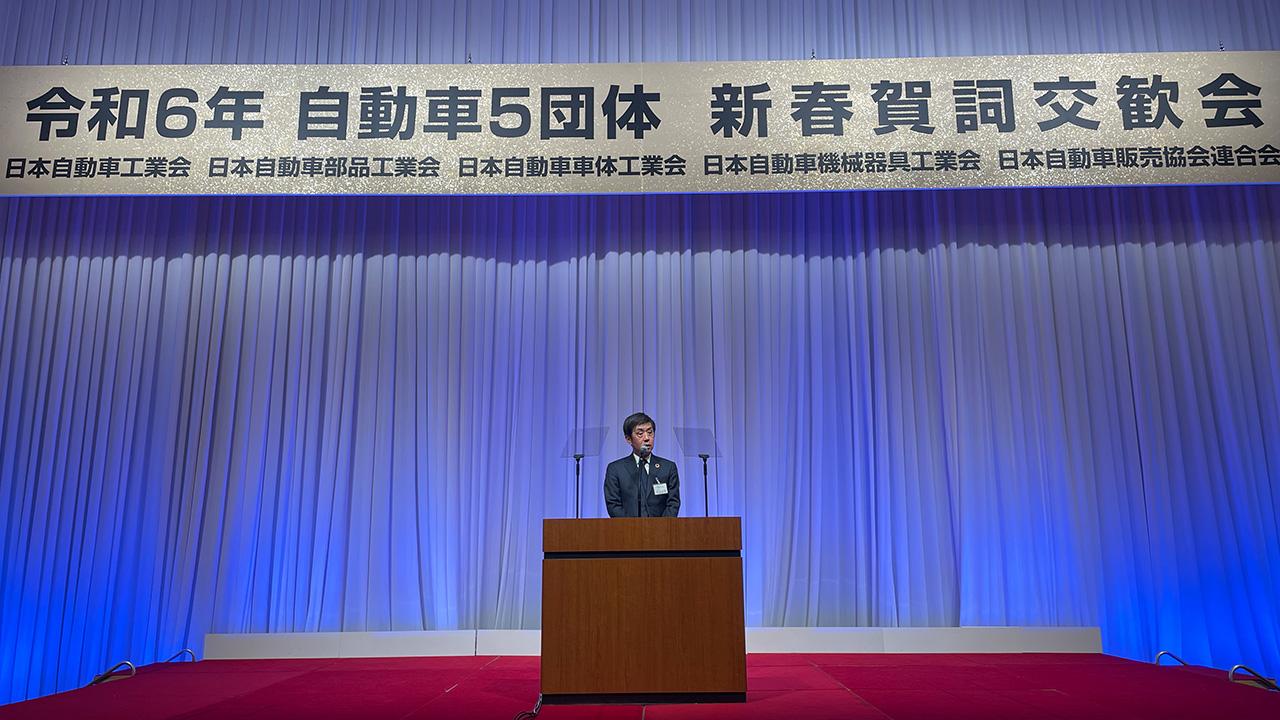
At the end of last year, the presidency of JAMA transitioned from Akio Toyoda to Masanori Katayama. This New Year's message highlights the united resolve to tackle challenges such as reconstruction from the Noto Peninsula Earthquake and the logistics issues of 2024.
The importance of kindness towards others
Former Chairman Toyoda
Happy New Year, everyone. This is Akio Toyoda.
First and foremost, I would like to offer my deepest condolences for the lives lost in the great earthquake on the Noto Peninsula and the airplane accident at Haneda Airport. My thoughts and sympathies are with all those affected by these tragedies.
I am speaking today at the invitation of Chairman Katayama.
It’s been 13 and a half years since I first took on the role of vice chairman of JAMA in 2010 and five and a half years since I began my second term as chairman in 2018.
Thanks to the support of many, I have been able to pass the baton to Chairman Katayama.
I am deeply grateful for your support and would like to extend my heartfelt thanks to everyone. Thank you very much.
Looking back at the history of JAMA, from its first chairman, Katsuji Kawamata in the 1960s, to its fifth chairman, Yutaka Kume in the early 1990s, all of them served as chairman for more than four years.
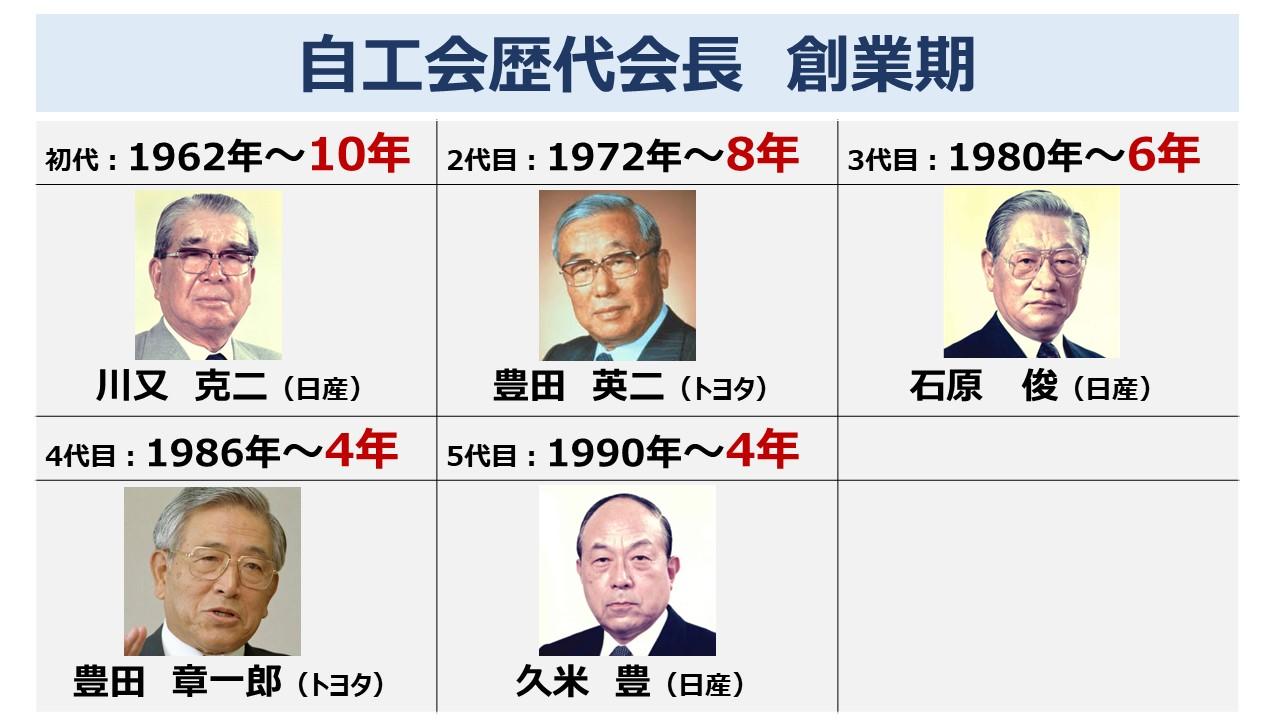
Throughout the history of JAMA, our predecessors overcame numerous crises, such as emission regulations, oil shocks, and trade frictions. I believe that era was truly the foundational period of JAMA.
Since then, the tenure of the chairman has shortened, and a rotation system among Nissan, Toyota, and Honda has become established.
As the automotive industry entered a “once-in-a-century period of great transformation” with the CASE (Connected, Autonomous, Shared, Electric) revolution, I had the opportunity to serve as chairman for a second term.
During this time, as we tackled structural reforms in the automotive industry amidst challenges like the COVID-19 crisis and the push for carbon neutrality, the slogan “the automotive industry is a collective effort” and “the future is something we build together” became our guiding principles.
Gradually, this philosophy materialized into a team of “5.5 million people behind cars.”
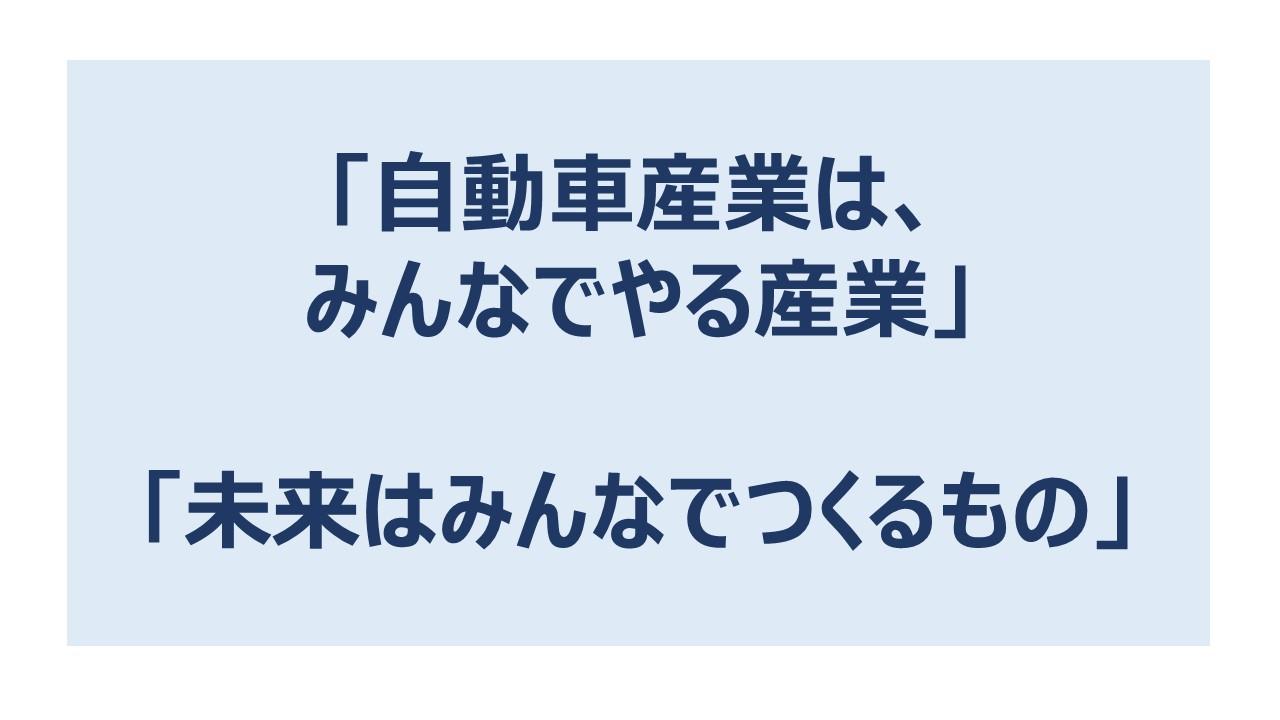
Often, the role of the chairman is likened to being a mikoshi (portable shrine), a revered and central symbol in Japanese festivals. As you can see, the Japanese character for koshi in mikoshi includes the character for “car.”
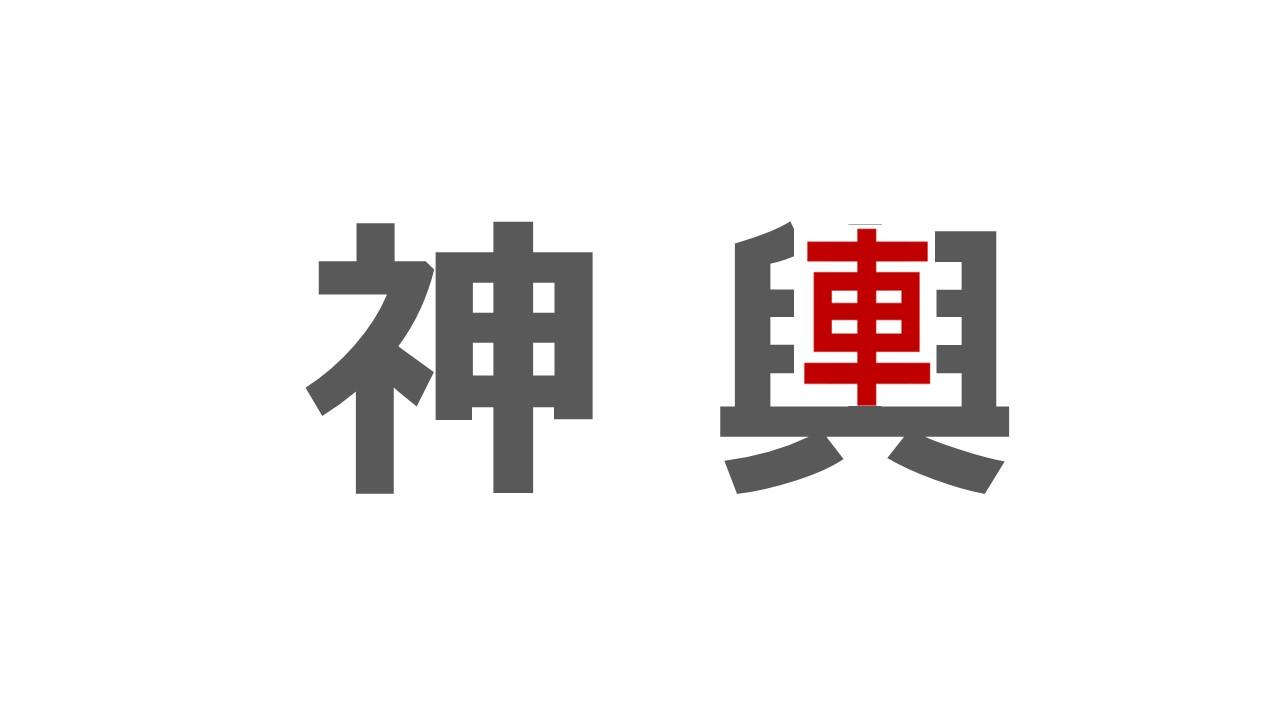
So, it is not the chairman but the automotive industry itself that should be revered.
With this belief, I join my colleagues in carrying the mikoshi of 5.5 million people.
At last year’s Japan Mobility Show, expanding beyond the boundaries of the automotive industry, many of our partners shared the message, “Discover a future you can’t wait to navigate!”
Then came 2024.
The new year began by viewing the first sunrise at Fuji Speedway and celebrating an 8-year comeback victory at the New Year Ekiden marathon race.
However, the joy was short-lived, as the Noto Peninsula Earthquake brought a somber beginning to the year.
Thirteen years ago, during the Great East Japan Earthquake, I was deeply moved by words from those in the affected areas:
“Please, those of you in strong and healthy regions and companies, work hard also on behalf of the affected areas to support Japan.”
Today, we have 5.5 million strong and resilient people working in the automotive industry in Japan.
I, along with these 5.5 million colleagues, am committed to helping those affected by the disaster recover their normal lives and smiles as soon as possible.
Now is the time to stop conflicts, divisions, disputes, and slander. It’s time to help each other, to say ‘thank you’ with a smile, and to show the maturity of adults.
This year, in addition to recovery from the earthquake, we face challenges like the logistics issues of 2024, which will test our ways of working.
In addressing these issues, it is crucial to have “kindness”—the ability to think of others besides ourselves.
The character for “kindness” in Japanese is written as “loving someone a hundred times.” It’s a reminder of the compassion we need to embody.
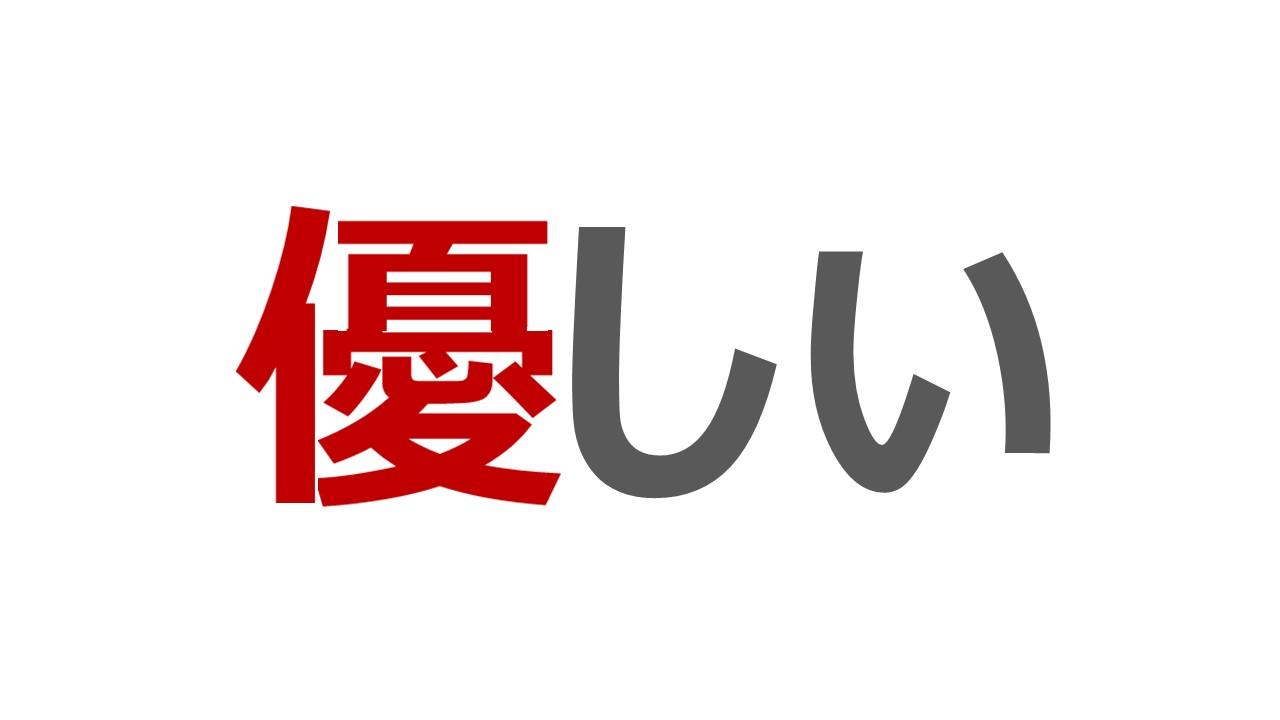
Love for our fellow humans living together in Japan and on the same Earth and love for the children who will be born into our future.
It is my hope that this year will be filled with such love. With this, I conclude my New Year’s greeting. Thank you very much.

